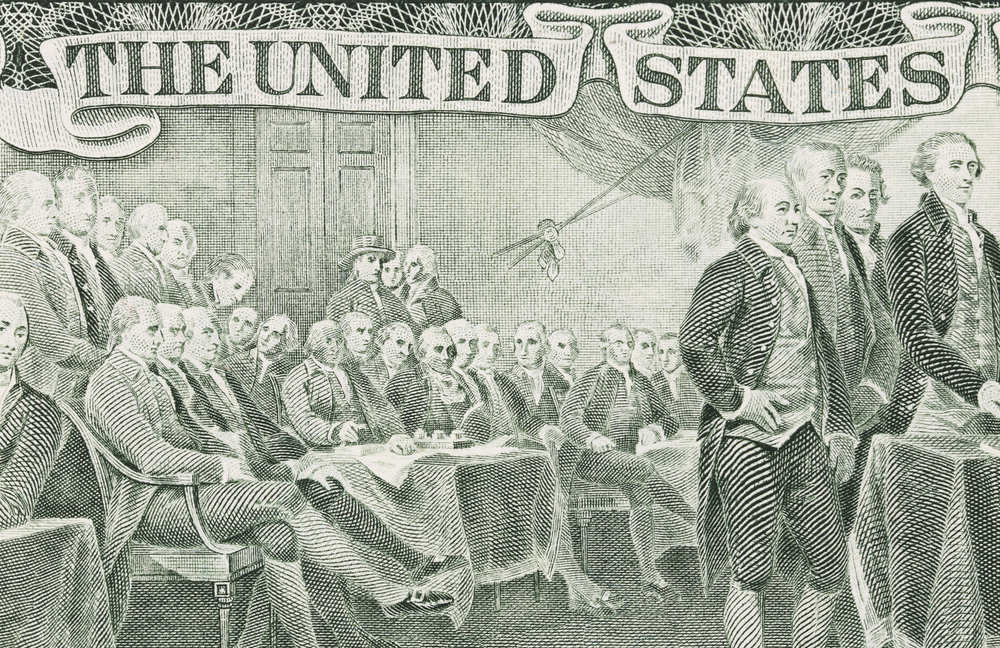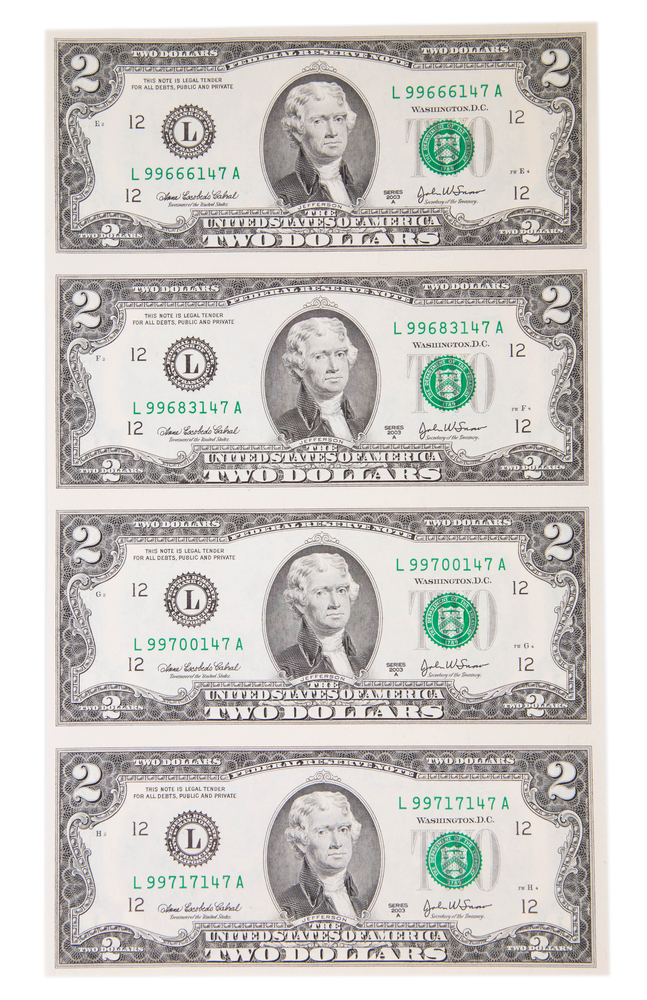
Most people treat $2 bills like quirky pocket change or conversation starters. But those crisp (or even slightly worn) notes could be worth far more than face value. Rare $2 bills have become prized among collectors, and some versions fetch hundreds or even thousands of dollars at auction. Their limited production and unique history make them a fascinating piece of American currency. Before you hand one over for coffee, here are four surprising reasons you should never spend your rare $2 bills.
1. Some Are Worth Far More Than $2
Not all $2 bills are created equal, and certain series can carry serious collector value. Bills printed before 1976, or those with unique serial numbers, like repeating digits, palindromes, or star notes, are particularly sought after. For instance, a 1928 red seal $2 bill in pristine condition can sell for $200 or more. Even newer bills from limited runs, such as those with “low serial numbers,” can bring in impressive offers from collectors. What looks like pocket change might actually be a hidden investment waiting to grow.
2. They’re No Longer Common in Circulation
The U.S. Treasury still produces $2 bills, but they’re printed in far smaller quantities than other denominations. Because they’re so rare in everyday transactions, many people assume they’ve been discontinued. This scarcity adds to their mystique and collector appeal. When someone comes across a rare $2 bill, it often becomes a keepsake rather than spending money. That limited supply means your bill’s rarity (and potential future value) continues to increase over time.
3. Collectors and History Buffs Are Willing to Pay Premium Prices
The $2 bill carries a fascinating legacy tied to America’s financial and political history. First introduced in 1862, it has featured figures like Thomas Jefferson and scenes from the signing of the Declaration of Independence. Collectors are drawn to this historical connection, and as a result, even slightly older or well-preserved bills sell for premiums. Some collectors specialize entirely in rare $2 bills, especially those with rare seals, misprints, or historic series. The more unique your bill, the more likely you’ll find a buyer willing to pay several times its face value.
4. Future Value Could Continue to Rise

Like collectible coins and vintage stamps, the value of rare $2 bills can appreciate over time. As more people realize their rarity, the demand in collector markets increases. Experts suggest holding onto these notes, especially if they’re in good condition or part of an older series. In 10 or 20 years, today’s “modern” $2 bill could become tomorrow’s sought-after collectible. Spending it now might mean losing out on a future windfall.
Why Holding Onto Them Is the Smart Move
Keeping your rare $2 bills safe is like storing a small piece of American history in your wallet. While they might not make you rich overnight, their rarity and nostalgic appeal make them a smart long-term hold. Even if your bills aren’t rare enough to fetch hundreds today, their symbolic and collector value grows as time passes. Protect them in sleeves or envelopes to preserve their condition and avoid folding or tearing. The little care you show now could pay off in surprising ways down the road.
Do you have any rare $2 bills tucked away in a drawer or wallet? Share when you last saw one (or if you’ve ever found a valuable one) in the comments below!
What to Read Next
- 10 Things You Should Never Finance After 35
- Think Twice: These 8 Items Should Never Be Bought Secondhand
- 10 Purchases You Should Never Put on a Credit Card
- Star Notes: The $1 Bills That Look Ordinary But Could Be Worth a Fortune
- Printing Money: 6 Vintage Trucks Enthusiasts Shouldn’t Ignore
The post 4 Surprising Reasons You Should Never Spend Your Rare $2 Bills appeared first on Clever Dude Personal Finance & Money.







